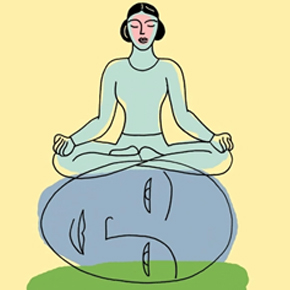Imagine that you decide to volunteer for an experiment. You reach the laboratory and are asked to perform the boring task of filling the beakers with water and placing them onto the trays for a good 15 minutes.
Once you do the needful, the experimenter thanks you and tells you to describe your boring task to the next participant as interesting so that he/she starts the task with a positive attitude. Now A receives $1 for telling the lie, B receives $20 and no discussion of any sort has been done with C (he is asked to leave after the experiment is over).
Now all three are asked to fill a routine feedback form about how much they enjoyed the task. Out of A, B and C, who do you think rated the task most positively? Commonsense might suggest B. But as Leon Festinger and J. Merril Carlsmith predicted in a classic experiment, A gave the most positive review of all.
This gave birth to Festinger’s theory of cognitive dissonance, people strive for consistency in their cognitions (beliefs, attitudes or perceptions). When two or more cognitions contradict with each other (like “I am an honest person.” and “I just lied to another participant about enjoying the task.”), the person experiences a state of discomfort and tension known as cognitive dissonance. And hence, becomes motivated to reduce this tension.
The theory suggests that to be able to do so, people will either change one of the cognitions or add a new one. B who received $20 could simply add another cognition by telling himself “Who wouldn’t lie for some good money?”; he had some reason to lie. But A who received $1 could not tell himself the same. So he decided to change one of the cognitions – change “The task was boring” to “The task was somewhat interesting.” Thus, A changes his cognition to bring it more in line with his behavior.
Behaviour that is not in tune with one’s attitude is called counterattitudinal behaviour. And when such behaviour is performed, it produces a state of tension only if we believe that our actions were freely chosen rather than forced.
Dissonance however is not always reduced by changing attitudes. It can also be brought down by using external justifications, by saying that other people also did the same or by making some excuses.
Final Word
People who have strong principles and a stronger self-image are more likely to experience greater stress due to cognitive dissonance. Others who have a vague self-image and set of principles to begin with, do not experience as much tension. They instead develop an attitude about something after they’ve performed an act related to it. So someone belonging to the latter category might tell himself that he told a lie for just $1 to a participant about enjoying the task, so logically concluding he must have deep down enjoyed the task a little. To put it in simpler words, you simply observe how you have acted and infer how you must have felt in order to behave in this fashion.





